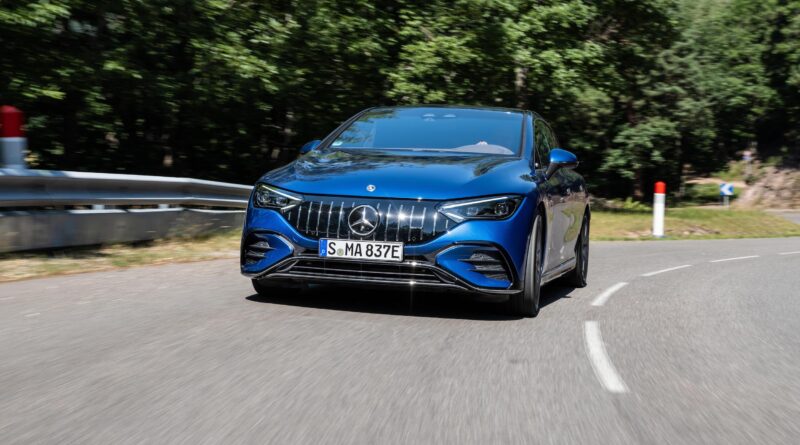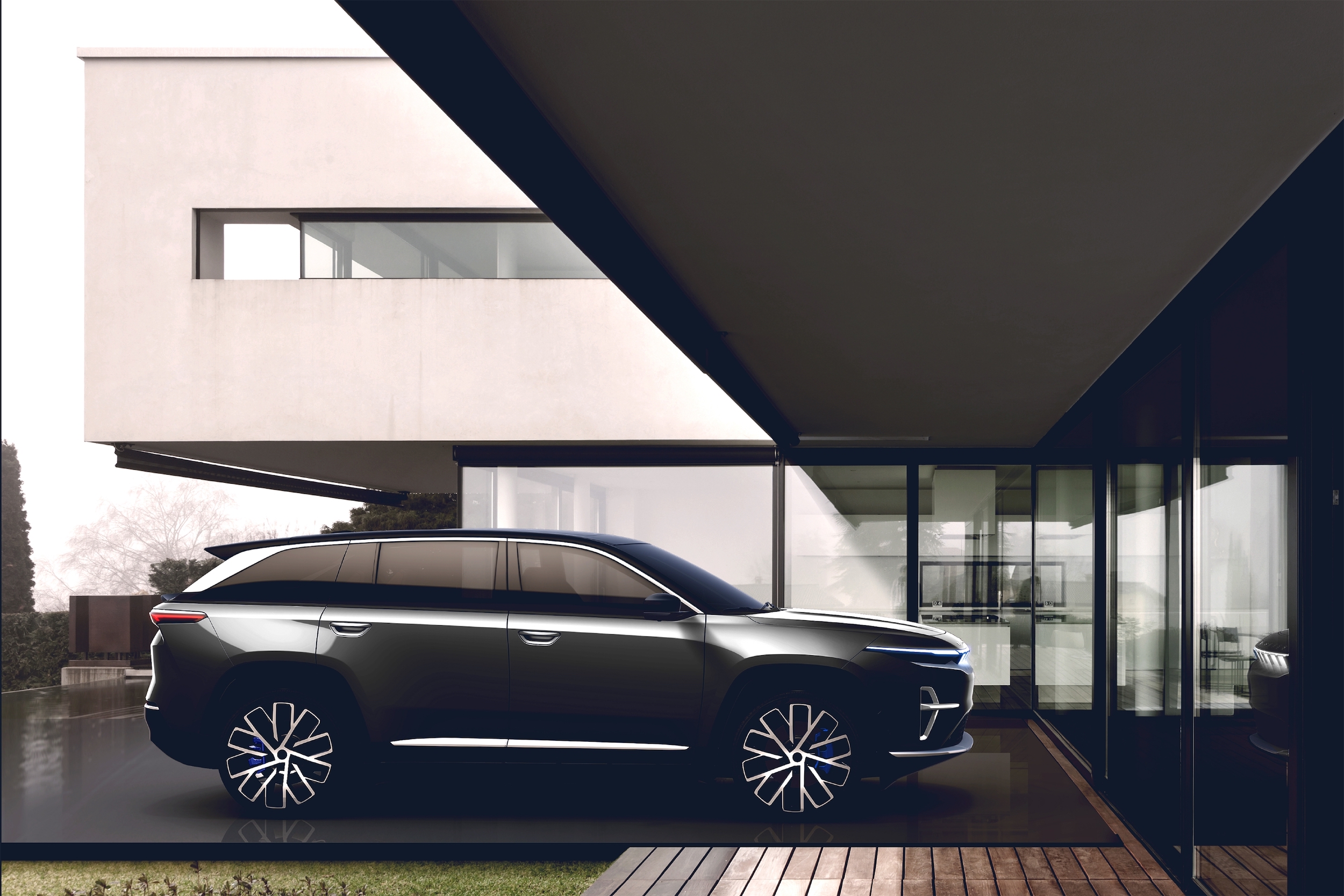Mercedes-AMG EQE53 4matic+ review
Firstly, the Mercedes-AMG EQE53 is as ferociously quick as the company’s ICE-powered super-sedan equivalent, the famously fire-breathing E63 S, which uses a twin-turbo V8 to do its thing. Secondly, the EV is in some ways and on some days much better to drive.
Rain is lashing down on the Vosges Mountains near France’s border with Germany. We’re nearing ski-resort altitude on the winding road, and the EQE53 is doing amazing things. It’s accelerating out of tight corners with incredible force… and without the slightest twitch of traction loss.
It’s an awesome display, but no mystery. Electric motors respond almost instantly to instructions, unlike internal combustion engines, and that’s a fact. Mercedes-AMG’s engineers have also done a beautifully effective job with the traction-control and chassis-stability software issuing the instructions.
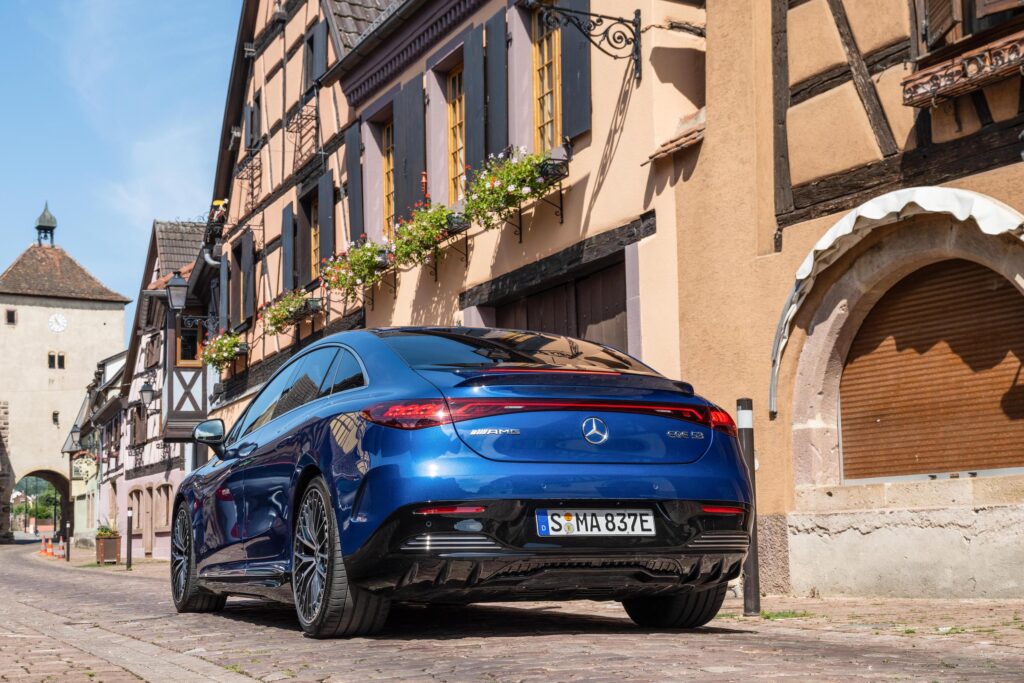
But the EQE53 is a lesser car than the E63 S in one important way… cost. When the high-performance EV arrives in Australia it’s expected to wear a price-tag close to $200,000. This will make it around $50,000 less than the E63 S.
Where the Mercedes-AMG EQE53 fits…
The AMG-badged 53 will top the EQE line-up when it launches here late in 2022. Mercedes-Benz Australia hasn’t yet decided which variants of the EQE will round out the local range. The present plan is to import a single-motor rear-drive entry-point version and a dual-motor all-wheel-drive mid-range model.
Unlike the Mercedes-Benz EQA and Mercedes-Benz EQC – each of which is designed on an ICE architecture adapted for EV duties – the EQE rides on a dedicated electric car architecture. The EQE is the second car from Mercedes-EQ, the company’s EV-only sub-brand, based on its EVA2 platform. The larger EQS, just arrived in Australia, was the first.
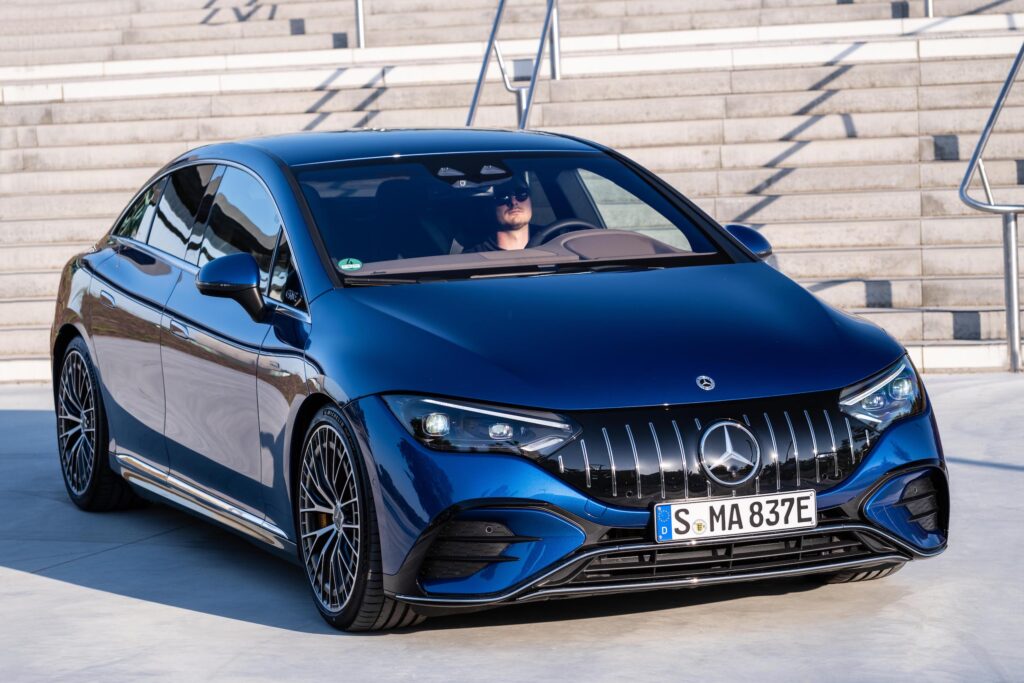
EVA2 is a technically advanced purpose-designed-for-EV platform. It’s going to also provide the basis for other large EVs from Mercedes-EQ, including the coming EQE and EQS SUVs.
The EQE is smaller overall than the EQS. Its shorter wheelbase means less room inside, but also less underfloor space for batteries. The biggest pack that will fit between the EQE’s axles is 91kWh, compared to the EQS’s 107kWh.
What makes the EQE53 an AMG?
This AMG-badged EV is cooked up to pretty much the same recipe as any of the brand’s ICE-powered models. The EQE53’s dual motors are modified for extra power, the suspension, steering and brakes are upgraded, the exterior and interior given a sportier look.
The EQE53’s front and rear motors are basically the same as in any other all-wheel-drive EQE or EQS. Both are permanent-magnet synchronous machines, but the rear motor has an unusual six-phase stator design while the front motor has three-phase stator.
AMG changes to the motors’ stator windings to handle higher currents, and upgrades their inverters, control software and cooling systems accordingly.
In a standard EQE53 the combined maximum power and torque outputs of the two motors are 460kW and 950Nm. Choosing the optional AMG Dynamic Plus package increases these numbers to 505kW and 1020Nm.
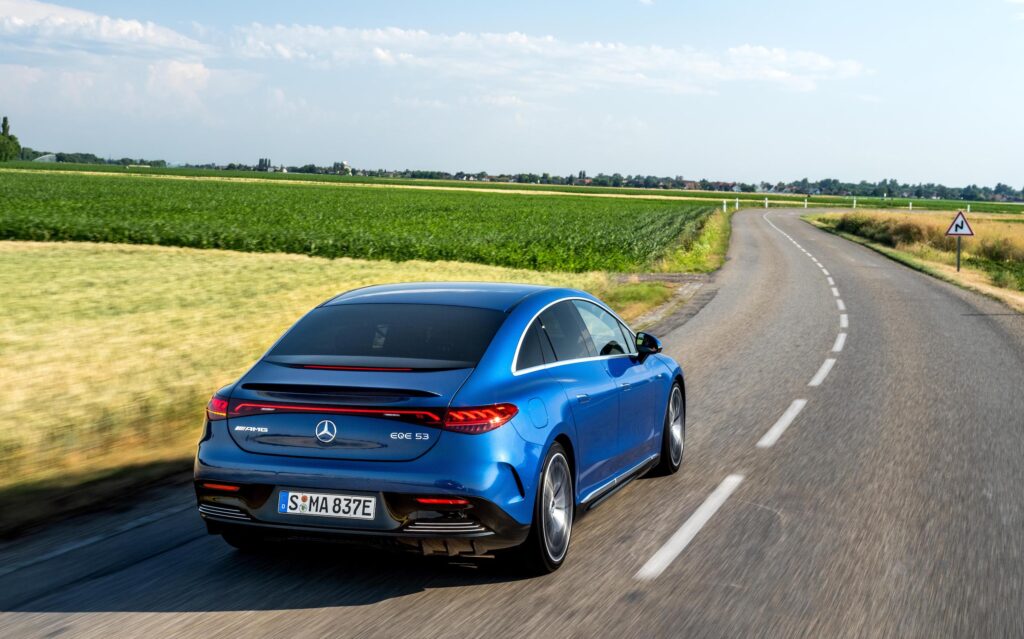
According to AMG, the EQE53 with Dynamic Plus can accelerate 0-100km/h in just 3.3 seconds. This is one-tenth quicker than the company claims for the V8-powered E63 S. In standard form the EQE53 takes 3.5 seconds. And this is just one-tenth slower than the E63 S.
More relevantly, perhaps, the EQE53 has straight-line acceleration that’s a near match for the more expensive Porsche Taycan Turbo… or the much less costly Tesla Model 3 Performance (the EQE is closer in size to the Tesla Model S, which includes the potent Model S Plaid with even more power).
Despite its obviously awesome performance, AMG logic doesn’t allow it to wear a 63 badge – the pinnacle of the AMG range. Jochen Hermann, the company’s tech chief, says this number will only ever be given to track-capable cars. AMG will not use it on any of its EVA2-based EVs, he has promised. We’ll get to why this is pretty sound reasoning later.
Style points
From the outside it’s the vertical chrome bars of the EQE53’s nose panel that identify it clearly as an AMG. The look mimics the so-called Panamera grille of the company’s ICE-powered models.
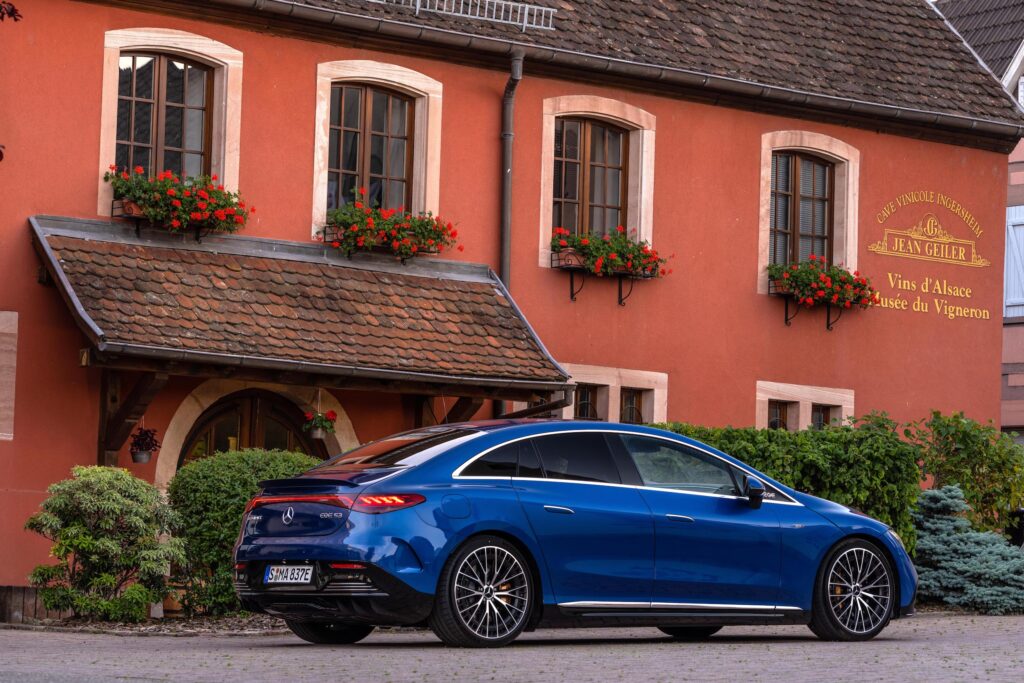
The EV’s front apron is also EQE53-specific, as are its side sills, rear diffuser and spoiler. Likewise its 21- and 22-inch aerodynamically optimised alloy wheels.
Inside the EQE53 the most obvious changes are the flat-bottomed AMG steering wheel, sports front seats and pedals. There are also AMG-specific menus and functions for the instrument, infotainment, passenger and head-up displays.
The full-width Hyperscreen display is an extra-cost optional in Europe. Mercedes-Benz hasn’t finalised the car’s Australia-market specification, so there’s a chance it may be standard here.
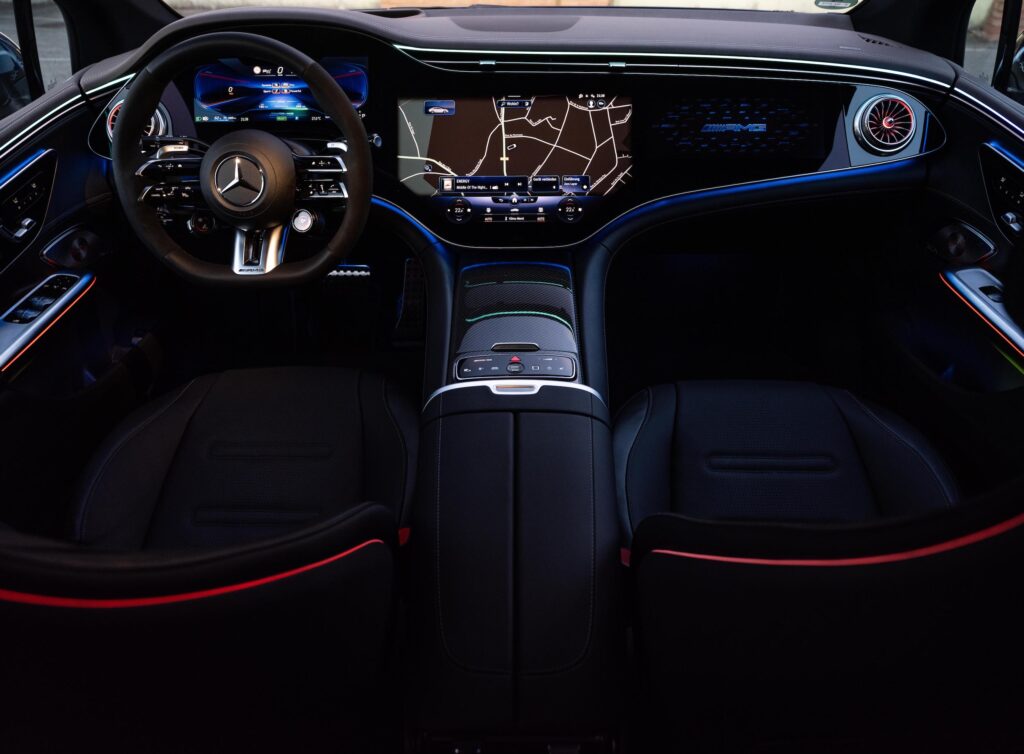
What you can count on is the EQE53 having, regardless of which display is fitted, is an impressive arsenal of driver-assist tech and a user-friendly infotainment interface.
Interior space
While the EQE53’s aerodynamic profile might benefit driving range, it’s not so great for rear-seat passengers. Headroom back there is sufficient, not generous, and getting in and out requires a bit of bending. There’s good legroom, though, thanks to the car’s relatively long wheelbase.
Up front, on the other hand, the EQE53 is all comfort, class, quality and tech. The seats are supportive and the driving position is very good. Forward vision is hampered a little by the steeply sloped A-pillars and the view through the rear glass is restricted to a narrow slot by the high tail.
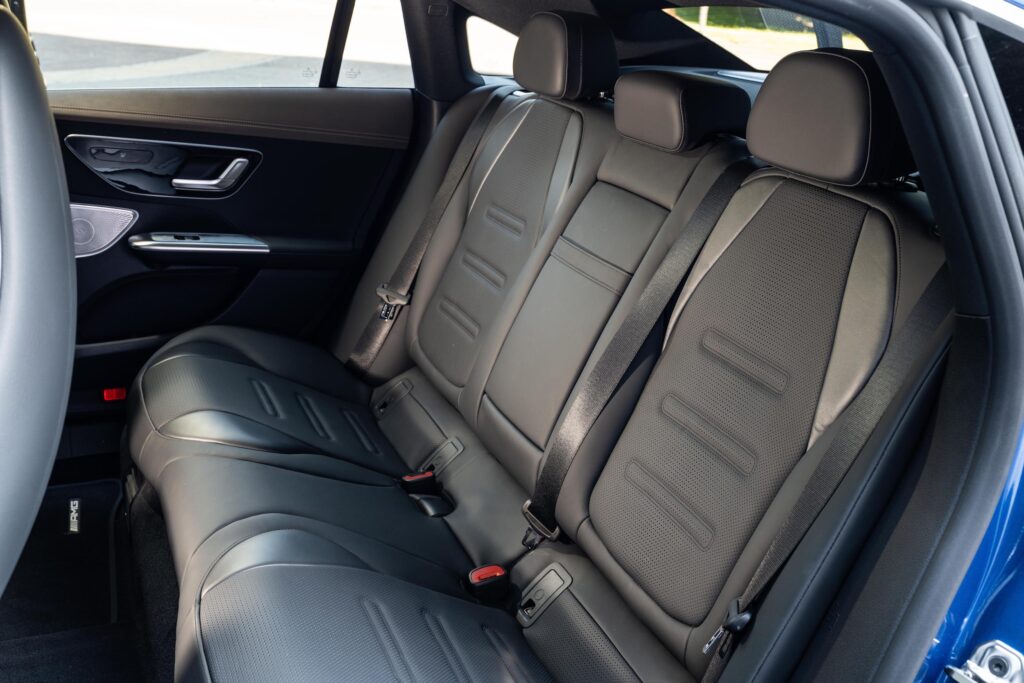
Unlike the big EQS, which has a liftback, the EQE has a normal sedan-style boot lid. Accessing its 430-litre cargo compartment isn’t as easy as a consequence.
Range and charging
The maximum driving range of the EQE53 is 518km, according to the WLTP standard. EV Database, the authoritative European website, rates the average real-world range of the AMG at 465km. Its worst-case (highway driving in cold weather) estimate is 340km and its best-case estimate (city driving in mild weather) is 655km.
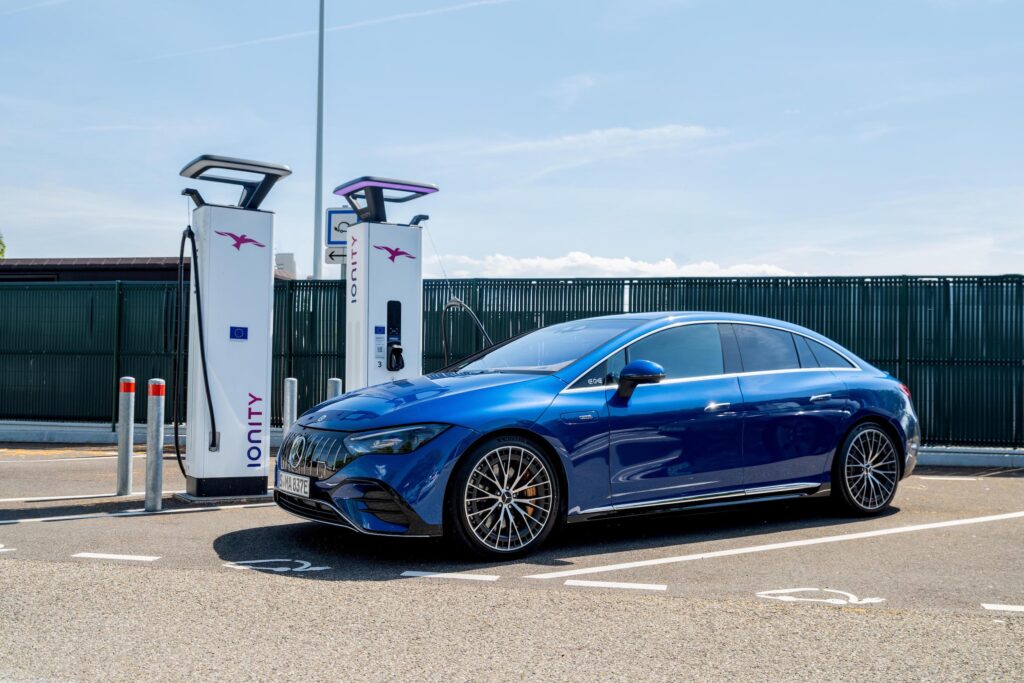
Connected to a powerful-enough DC fast charger, the 328-volt 91kWh battery pack can take up to 170kW through the CCS plug found under a flap near its right rear wheel. A 10-80 percent charge will take 33 minutes, according to EV Database.
The EQE53 comes standard with an 11kW on-board AC charger. Hooked up to a 3-phase 16 amp 240 volt wallbox power supply that can deliver the full 11kW, a complete recharge will take almost 10 hours. This time is halved with the optional-in-Europe 22kW on-board charger, and a 3-phase, 32 amp 240 volt power supply.
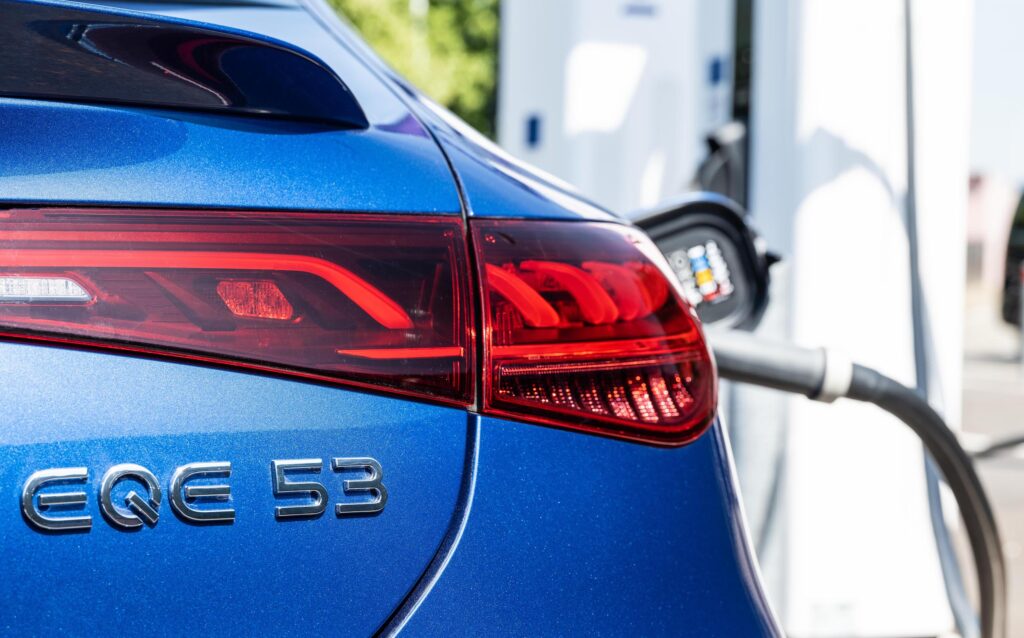
Any single-phase wallbox will be much less powerful and take much, much longer to fully recharge the EQE53… up to 29 hours with a low-rated 3.6kW unit, for example.
Driving the EQE53
Air springs and adaptive dampers are standard in EQE53. Even though AMG engineers have aimed to make the EV sportier to drive than versions of the EQE wearing Mercedes-EQ badges, it eats up bumps without fuss.
Like other EVA2-based models, it’s also incredibly quiet, at least with the synthetic soundscapes AMG has created for the sound system turned off.
Silence and smoothness combine to make the EQE53 very comfy. It’ll be a great EV for those brave enough and organised enough to explore the limits of both the car’s range and Australia’s charging infrastructure.
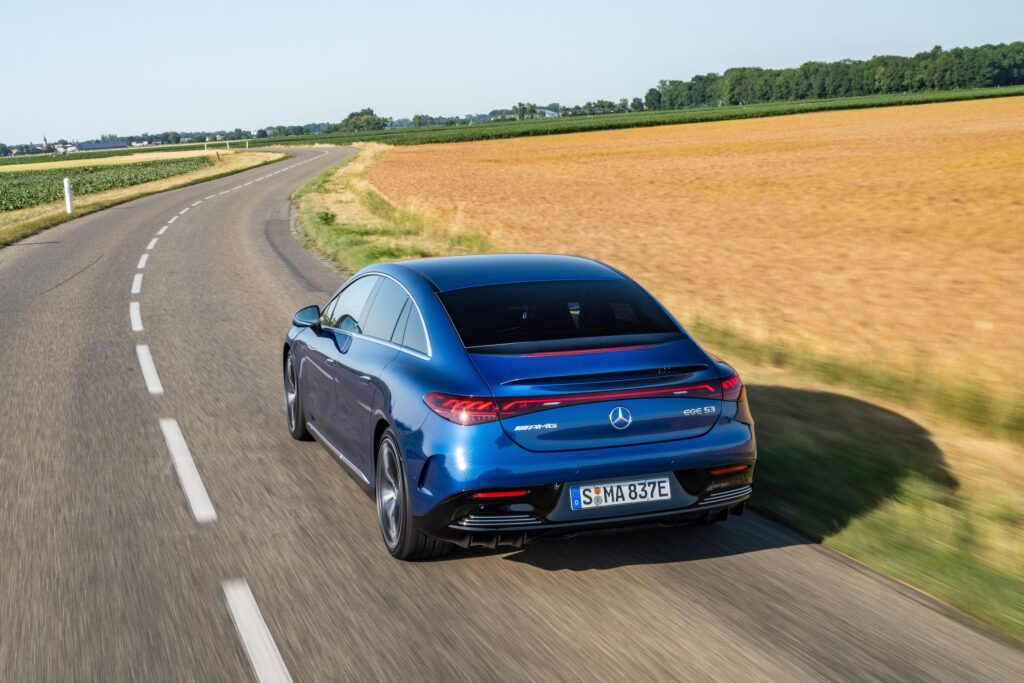
Drivers who chose instead to explore the AMG EV’s handling and performance capabilities will also find the EQE53 has its charms.
The car’s selectable modes and regen-altering steering-column mounted paddles deliver a decent degree of driver involvement.
The way the AMG accelerates is truly intoxicating, addictive even. And the grip of the EQE53’s broad tyres, the immense and instant thrust of its electric motors, and the expert calibration of its traction-control and chassis-stability software make the experience easily accessible.
But the car’s 2600kg-or-so weight cannot be disguised when driving with some enthusiasm. When slowing, or steering, or slowing and steering, the heaviness of the EQE53 is obvious.
The car’s standard rear-wheel steering does aid agility. But any perceptive driver will be aware of how hard the brakes and front tyres are working when the AMG is hustled along a winding road.
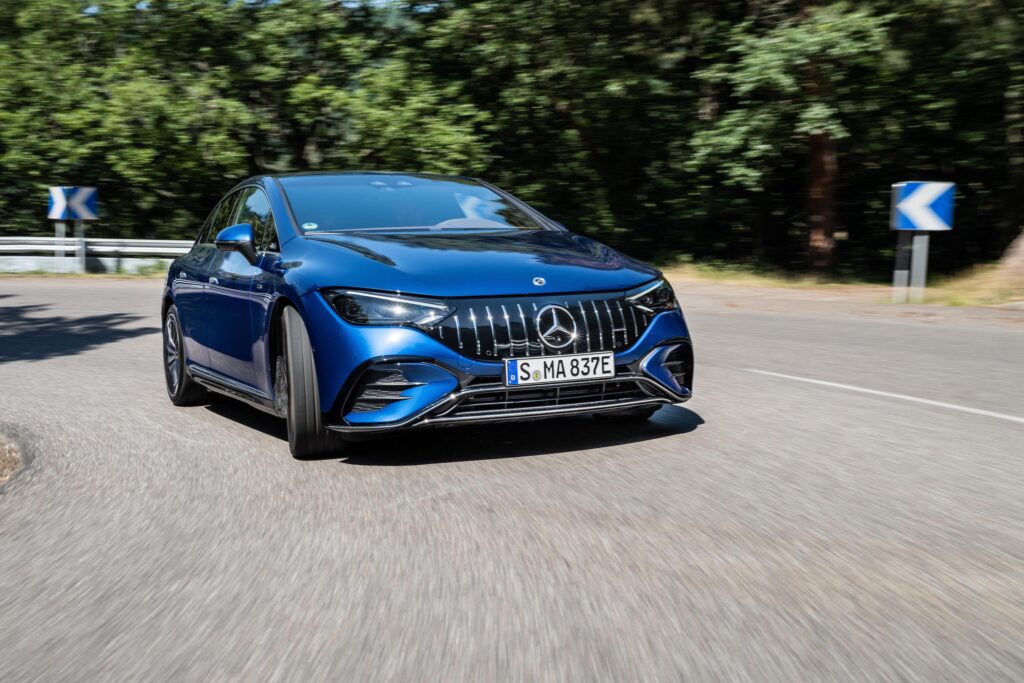
It’s quickly obvious why tech chief Jochen Hermann doesn’t think AMG’s EQE doesn’t deserve to wear a 63 badge. Around a track, the EQE53’s disadvantages would be magnified. It wouldn’t see which way an E63 S went…
The wrap-up…
The Mercedes-AMG EQE53 has quite a bit going for it; distinctive looks, awesome acceleration, very polished drivetrain and chassis tech, great interior presentation and a premium-brand aura.
It’s not too hard to imagine it attracting a variety of buyers. AMG fans ready to make the switch to electromobility, if any of these actually exist (the V8 engine, after all, has been a big part of the AMG appeal). Owners of a worn-out Tesla Model S, too, maybe. Porsche Taycan fanciers who see the EQE53 as a value-priced alternative. Very wealthy members of the EV-curious community…
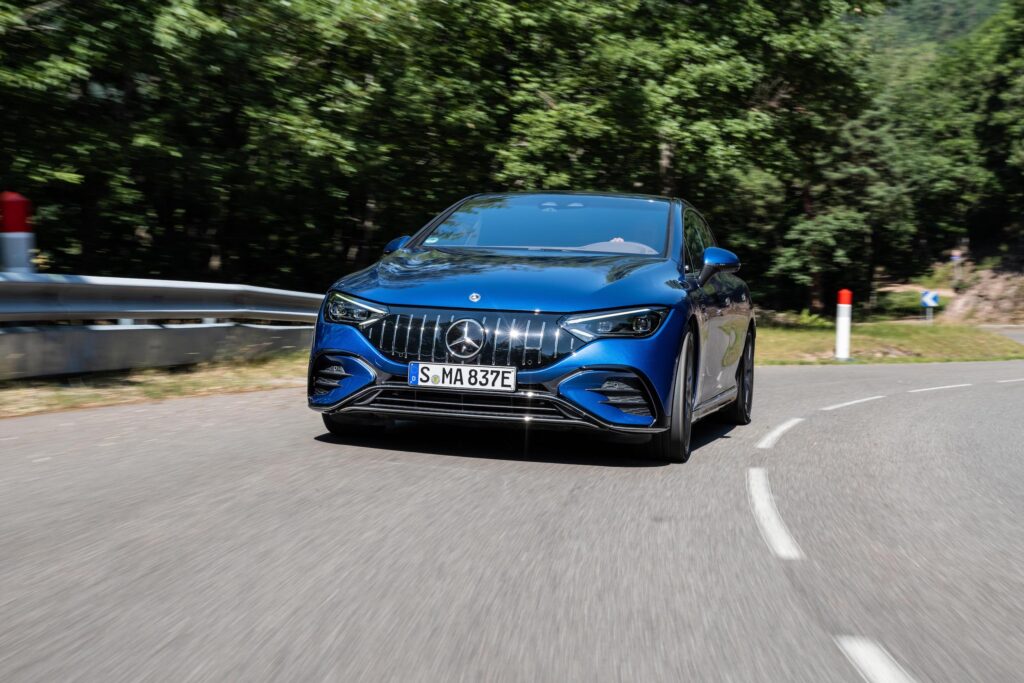
Whoever they are, the EQE53 will likely make them quite happy. Especially on a winding mountain road in the pouring rain.
Mercedes-AMG EQE53 4matic+ specifications
Price: $200,000 (estimated)
Basics: EV, 5 seats, 4 doors, large sedan, AWD
Range: 518km (WLTP)
Battery capacity: 91kWh
Battery warranty: 10 years/250,000km (guarantee of 70 percent of original battery capacity)
Energy consumption: 17.5 to 20.4kWh/100km (WLTP)
Motors: 2, 460kW/950Nm (505kW/1020Nm with AMG Dynamic Plus package)
AC charging: 11kW, Type 2 plug
DC charging: 170kW, CCS plug
0-100km/h: 3.5 seconds (3.3 seconds with AMG Dynamic Plus package)

